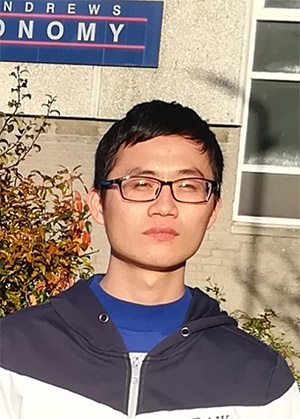USTC Astronomy Seminar Series: 2019 Fall
Comparison of stellar populations of simulated and real post-starburst galaxies in MaNGA
郑奕锐 博士
University of St Andrews
2020/01/03, 4:00pm , the 19th-floor Observatory Hall

MaNGA, an integral field unit survey, has produced datacubes for more than 100 galaxies which contain post-starburst (PSB) regions, i.e., regions in which star formation has recently been sharply truncated. Spectral index and emission line maps give us information about the star formation history and, therefore, formation mechanisms of these galaxies. A small fraction of these galaxies show very strong radial gradients in their Balmer absorption line strengths. To investigate the origin of these strong radial gradients, we use Gadget-3 to run a set of binary merger simulations with varied black hole feedback models, progenitor galaxies, and orbits. We develop the SEDMorph code to make mock MaNGA datacubes for the simulated galaxy. Spectral index maps for the simulated post-starburst galaxies are created by combining the star formation history and metallicity of each particle with stellar population synthesis models. A point-spread function and a dithering pattern are also included to make our mock cube more comparable to the MaNGA data. With the simulations and mock datacubes, we find that only the kinetic blackhole feedback model can create galaxies with strong PSB features. Under this model, we confirm the radial gradients in the Balmer absorption line strengths in these PSBs are caused by a single co-eval burst which was stronger in the central regions, rather than a starburst that has progressed from outside-in.
Mr. Yirui Zheng (郑奕锐) is a Ph.D. student from the School of Physics and Astronomy, University of St Andrews. He gained his bachelor degree in astronomy in USTC in 2017. His research is focused on the formation and evolution of post-starburst galaxies. He is using simulations to interpret the observation results of integral field unit surveys like MaNGA.
 邮编:230026 ,
邮编:230026 ,  联系电话: 0551-63601861
联系电话: 0551-63601861 Email:
Email: